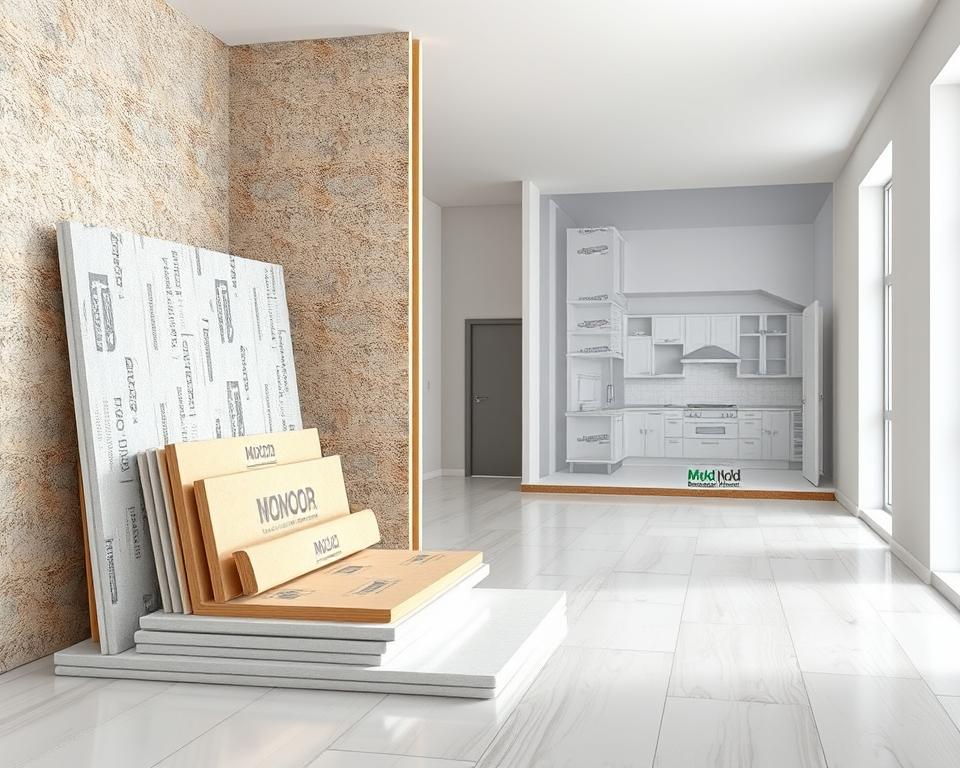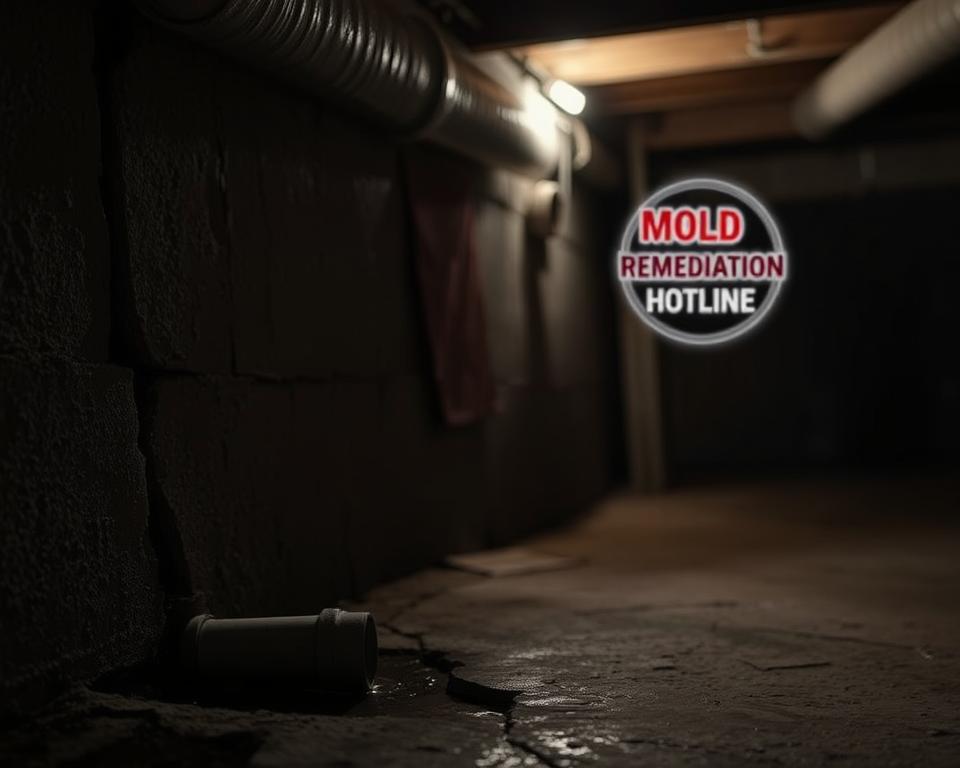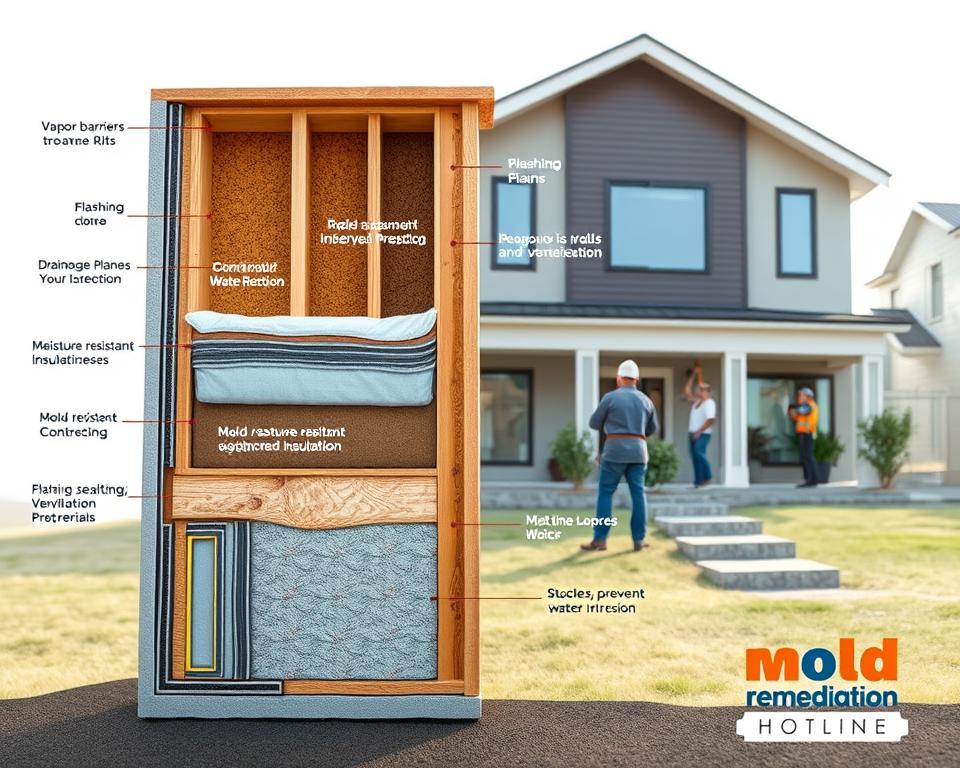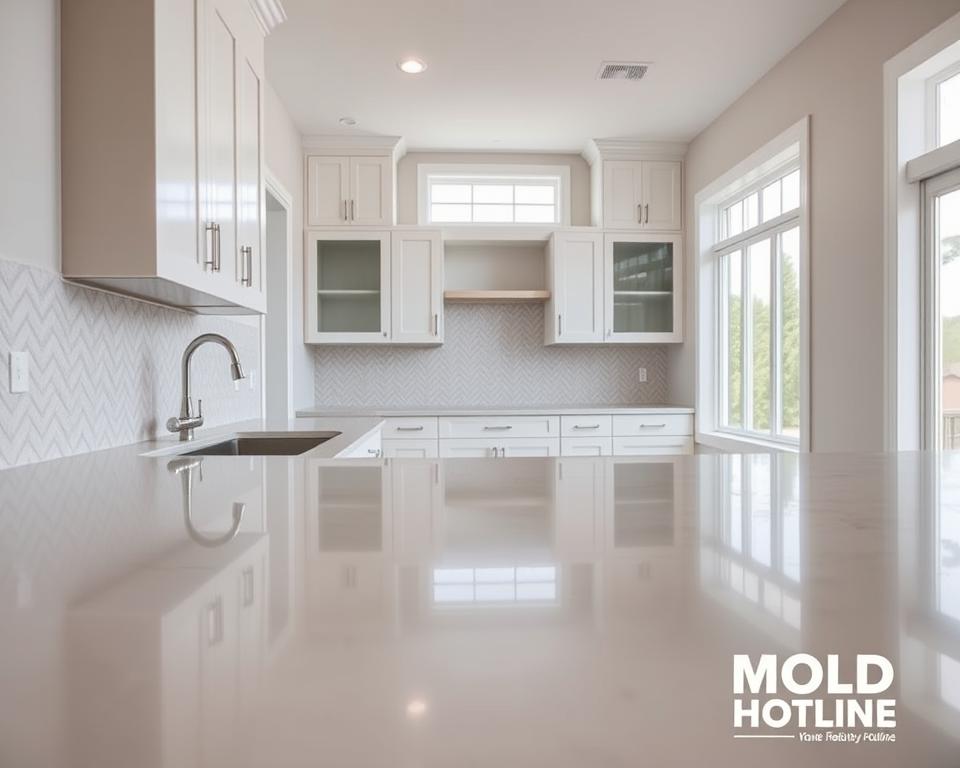Did you know structures with untreated moisture issues lose 15-30% of their market value within five years? Mold doesn’t just trigger allergies—it silently erodes property equity and livability. Nearly 40% of building-related health complaints stem from hidden fungal growth, according to recent environmental studies.
Constructing or renovating spaces requires more than aesthetic choices. Moisture control sits at the core of durable design, yet many overlook its connection to air quality and structural integrity. When water meets organic materials like wood or drywall, colonies can form in under 48 hours—often before anyone notices.
Smart planning today prevents costly interventions tomorrow. Integrating specialized barriers and ventilation during initial builds costs 67% less than removing established infestations later. These systems act like invisible shields, working together to block spore-friendly environments.
True protection comes from collaboration. Architects, builders, and environmental experts now team up from blueprints to final inspections. Their shared goal: create living spaces that resist biological threats while maintaining comfort and style.
Key Takeaways
- Untreated moisture issues can slash property values by up to 30%
- Mold prevention starts during initial construction phases
- Integrated systems provide layered defense against fungal growth
- Early investment in protection saves thousands in future repairs
- Cross-industry expertise ensures comprehensive solutions
- Modern materials and designs offer invisible, long-term safeguards
Introduction to Professional Mold-Resistant Home Upgrades
Recent studies reveal that 1 in 4 newly constructed buildings develop mold issues within their first year. This silent invader thrives where moisture meets organic materials, compromising air quality and structural stability. Early intervention during construction phases stops colonies before they establish footholds.
https://www.youtube.com/watch?v=iwa1baTxjDE
Modern builders combine science with design to combat fungal threats. They use vapor barriers and ventilation systems that work like invisible shields. These layers block spore-friendly environments while maintaining energy efficiency.
Investing in prevention during initial builds saves up to 67% compared to post-infestation repairs. Materials like treated drywall and moisture-wicking insulation create hostile conditions for microbial growth. Climate-specific strategies matter too—coastal areas need different solutions than arid regions.
Teams of architects, engineers, and environmental experts now collaborate from blueprint stages. Their goal: integrate protection without sacrificing aesthetics. For example, hidden drainage channels can redirect water while preserving sleek exterior designs.
Property owners should consult specialists during planning phases. Custom solutions address unique site challenges, whether sloping terrain or high humidity levels. This proactive approach safeguards both physical structures and occupant health.
Understanding Mold Prevention: Challenges and Best Practices
What makes mold prevention so tricky? The answer lies in nature’s design. Mold spores float through every environment, harmless until they find moisture and organic materials to feast on. As the EPA states:
“The key to mold control is moisture control.”

Why Prevention Outperforms Remediation
Stopping mold requires understanding its three needs: food (like wood or drywall), warmth, and water. Remove just one element—especially moisture—and colonies can’t form. Modern construction’s tight seals trap humidity, creating accidental breeding grounds without proper airflow systems.
Consider these facts:
- Asthma attacks spike 40% faster in moldy environments
- Wood rot from hidden growth weakens load-bearing walls
- Insurance claims for mold damage average $22,000 per incident
Hidden Costs Beyond Health Impacts
While coughing and wheezing grab attention, structural damage often goes unnoticed. Spores digest organic materials 24/7, compromising floors and framing. One study found properties with past mold issues sell for 17% less than comparable listings.
Effective prevention combines smart materials with daily habits. Install bathroom fans that run automatically during showers. Choose concrete over wood for basement walls. These layered defenses keep spaces healthy and intact for decades.
Crucial Building Materials and Design Strategies
Construction teams now treat building envelopes like biological armor. Unlike traditional approaches that unintentionally fed mold colonies, modern methods starve fungal growth at its source. The right combination of materials and design creates environments where spores can’t gain traction.

Materials That Outsmart Fungal Growth
Paperless drywall revolutionizes wall construction by removing the cellulose layer mold loves. Its fiberglass-faced surface handles paint and texture like standard drywall but resists moisture absorption. Pair it with rigid foam insulation—these boards won’t trap dampness like fiberglass batts do.
Steel studs outperform wood framing in humid areas. Metal provides no organic food, though installers must prevent condensation. For unavoidable wood elements, pre-treatment matters:
- Spray EPA-approved fungicides on beams and plywood
- Use borate-treated lumber for critical structural components
- Apply mold-inhibiting primers before installation
Specialty paints add chemical defenses to surfaces. Formulations with zinc oxide or tea tree oil create hostile surfaces for spores. In bathrooms and basements, these coatings work alongside ventilation systems to block colonization.
Window installations demand precision. Proper flashing and sealants prevent moisture leaks around frames—a common entry point for dampness. Thermal breaks in modern frames reduce condensation risks that lead to hidden growth.
Moisture Control: Foundation, Drainage, and Ventilation
How much slope does your foundation need to repel water effectively? The answer lies in precise grading standards that create invisible shields against moisture intrusion. Proper ground preparation forms the first line of defense, directing rainwater and melting snow away from vulnerable areas.

Establishing a Solid Foundation with Proper Grading
Landscapes must slope six inches downward within ten feet of foundation walls. This grading standard prevents pooling while accommodating decorative plants or walkways. Contractors often use laser levels to verify slopes meet exact specifications before finalizing soil compaction.
Below-grade protections matter just as much as surface grading. Thick polyethylene barriers beneath concrete slabs block ground moisture from seeping upward. Masonry blocks with weep holes allow trapped water to escape, preventing pressure buildup against walls.
Effective Ventilation Techniques for Moisture Reduction
Stale air invites humidity problems. Strategic vent placement in attics and crawl spaces creates natural airflow channels. Bathrooms and kitchens require dedicated exhaust systems—duct them outside, not into attics, to avoid hidden condensation issues.
| Strategy | Key Feature | Effectiveness |
|---|---|---|
| Foundation Grading | 6″ slope over 10ft | Blocks 85% surface water |
| Vapor Barriers | 20-mil thickness | Reduces moisture rise by 92% |
| Mechanical Ventilation | 150 CFM fans | Cuts humidity spikes by 68% |
Dehumidifiers in basements maintain humidity below 50%—the critical threshold for spore growth. Pair these units with smart sensors that activate systems when moisture levels creep upward. Together, these methods form layered defenses that adapt to seasonal changes.
The Role of Construction Techniques in Mold Prevention
Proper concrete curing techniques can prevent 80% of moisture-related mold issues in new builds. Teams achieve this by blending waterproofing compounds directly into concrete mixes during pouring. This method creates permanent moisture barriers within structural elements rather than temporary surface fixes.

Waterproofing and Moisture Barriers
Three critical steps transform standard practices into mold-resistant systems:
- Chemical integration: Adding crystalline admixtures to concrete blocks capillary action
- Timed drying: Allowing 30-day evaporation periods before installing wood components
- Layered protection: Combining exterior membranes with interior drainage systems
New concrete holds over 2,000 pounds of water during curing. Rushing this process forces moisture into adjacent materials. Builders use moisture meters to verify levels drop below 19% before framing begins.
| Stage | Action | Result |
|---|---|---|
| Foundation Prep | Apply rubberized asphalt coating | Blocks 98% water intrusion |
| Wall Assembly | Install self-adhering membranes | Reduces air leakage by 75% |
| Final Inspection | Thermal imaging scans | Identifies 90% of hidden defects |
Daily site monitoring catches installation errors like incomplete sealant application. Trained inspectors flag issues before walls close up—saving thousands in future remediation costs. These methods stop water damage at its source, starving mold of its primary food and breeding grounds.
Integrating Advanced HVAC and Air Purification Systems
Modern climate systems now do double duty—regulating temperatures while acting as fungal defense networks. Advanced HVAC setups slash airborne spore counts by 87% through multi-stage filtration, according to indoor air quality studies. These systems work silently behind walls, creating invisible shields against microbial threats.
High-efficiency particulate air (HEPA) filters trap particles as small as 0.3 microns—smaller than most mold spores. Pair them with UV-C lights that disrupt DNA in passing microorganisms. Smart sensors adjust fan speeds when humidity exceeds safe levels, preventing condensation before it starts.
Duct design proves equally crucial. Sealed joints and smooth interiors minimize dust buildup where spores might hitch rides. Energy recovery ventilators maintain fresh airflow without sacrificing temperature control, cycling entire house air every three hours.
These technologies form a living ecosystem. When combined with proper drainage and vapor barriers, they create environments where moisture can’t linger. The result? Spaces that stay healthier through seasonal changes and accidental leaks.
Investing in smart air management pays long-term dividends. Reduced allergy triggers and preserved structural materials offset initial costs within years. Like having a 24/7 guardian against invisible invaders, these systems protect what matters most.
